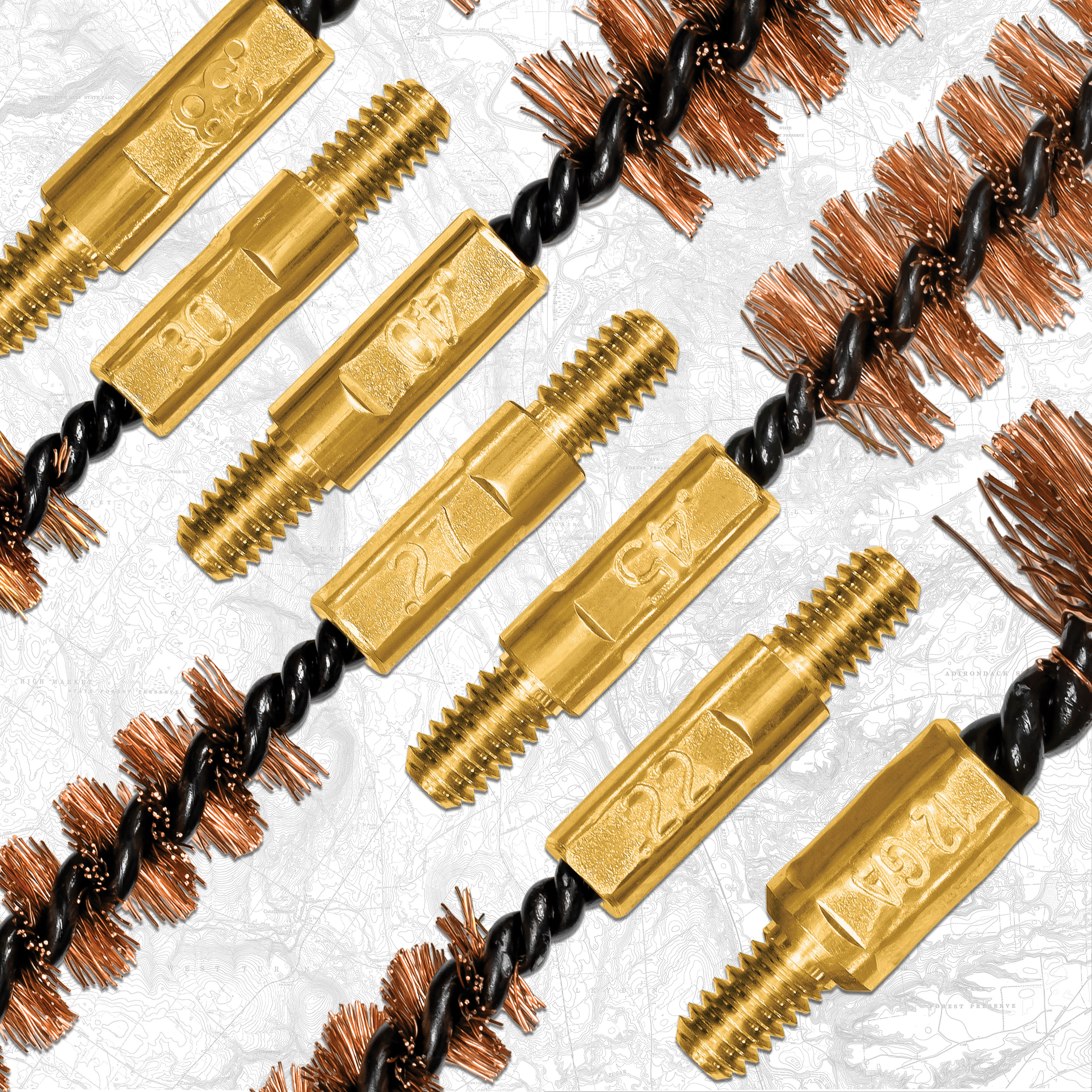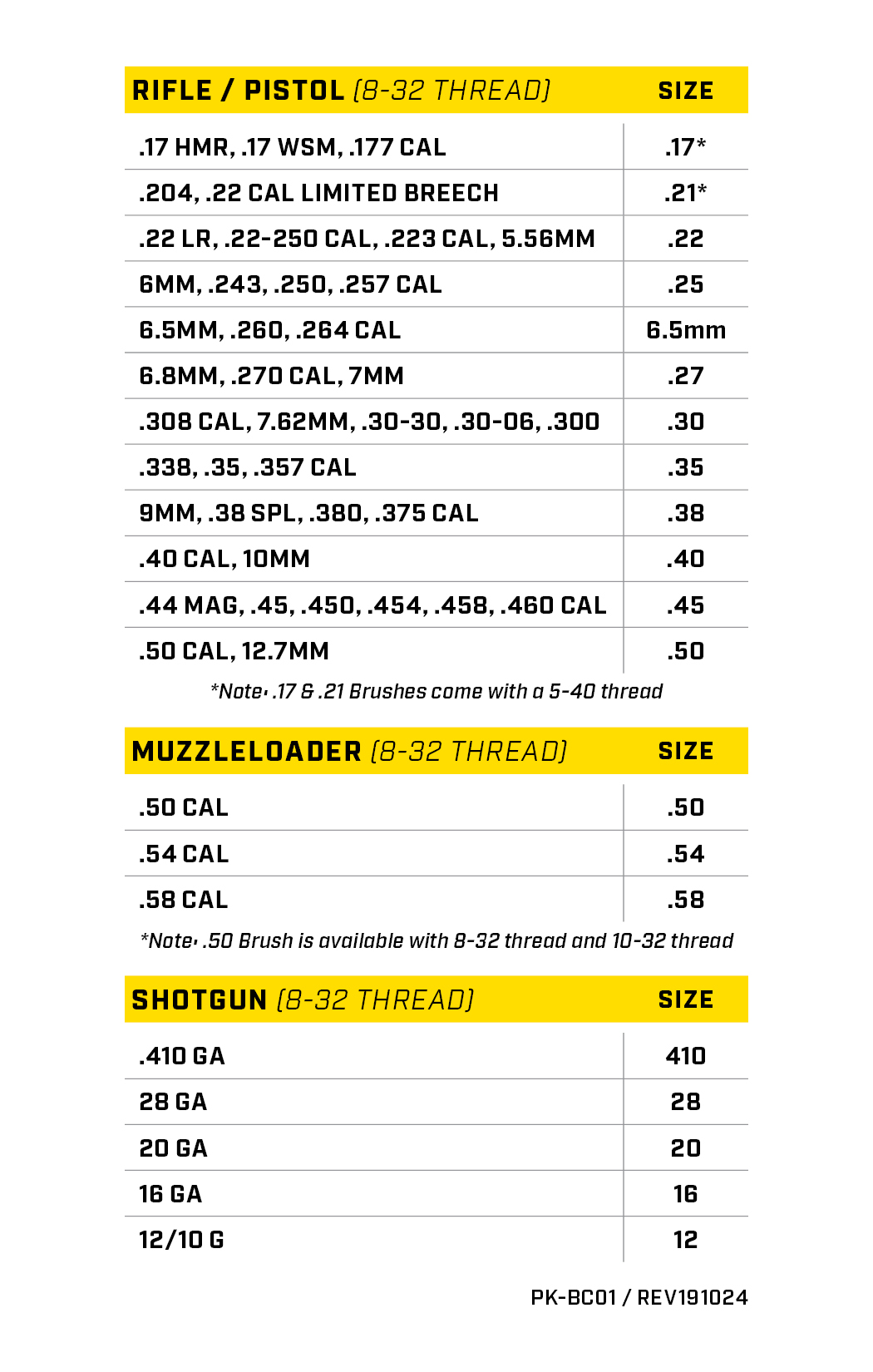How To Choose the Best Bore Brush for the Job
At Otis we offer a variety of different brushes to help you get the best clean every time and supply you with the right tools for the job. Our caliber and gauge-specific brushes have the size indicated on the stem, ensuring you grab the right brush every time. Otis brushes have a proprietary Tufcor® core wire that is corrosive-resistant with a tighter twist for better bristle retention and brush life.

What goes into choosing the right bore brush for the job? A little more than you might initially think. For example, what kind of bore brush is best for loosening fouling? What are the benefits of bronze over nylon and vice versa? What makes Otis brushes superior to other brushes? And how do I know what size bore brush to buy, are all great questions. And we’re happy to help shed a little light on the situation.
First let’s talk materials. Nylon and bronze (bronze-phosphor compound) are most common, but some of our specialized brushes, like the .223cal/5.56mm and .308cal/7.62mm chamber brush, have steel bristles as well. The steel comes in handy when you’re going to town on your locking lugs and star chamber areas, but you wouldn’t want to run it down your bore. Unlike steel, brass is softer than your chrome lined steel barrel so it won’t scratch the bore.
So, nylon or bronze? Which one offers a better clean and gives you more scrubbing power?
A lot of people reach for a bronze brush to get a superior clean, but in our experience it really comes down to user preference. Some folks feel like the nylon brush cleans just as well as the bronze while others really enjoy the scrubbing power of the bronze brush and think that the nylon brush is best suited to sweep out loose carbon and fouling rather than scrub out the tough stuff.
They type of solvent you are using can also help dictate which brush material you choose. Brass brushes are ideal for use with solvents designed to remove powder, lead, metal fouling, carbon deposits, and rust. Nylon is also a great choice when cleaning with solvents like copper removers, as the chemicals won’t break down the nylon the same way they might brass. Depending on the copper remover you use, bronze brushes can also give a false read on your clean, as some ammonia based copper removers will still turn blue or green as they react with the bronze brush rather than any copper left in your barrel.
Whichever you pleasure, we’ve got you covered. Try them both and see which material you prefer.
We came out with a two pack of bore brushes in a wide range of calibers and gauges that include both a bronze and nylon brush. Check them out here.
What about brush length? The majority of Otis bore brushes are 2 inches long. This is so you can pull the brush and cable through from Breech-to-Muzzle® without disassembly. Make sure when purchasing pull through gun cleaning gear that you pay attention to this. Longer brushes when attached to the cable won’t always fit in the action. Our smaller bore brushes for .17 and .22 caliber are one inch in length for limited breech actions. Not all firearms are created equal though and you might run across a firearm in your safe where even a 2” compact brush is still too long. Simply feed the cable from the muzzle down into the action and then screw the brush on. Pull through as you normally would.
What size bore brush do you need? With so many different calibers and gauges out there sometimes it can be difficult to decipher which size brush you need. Will any .30 cal brush clean your 300 Win. Mag.? What do I use to clean my 10mm? We get these questions a lot and this brush chart can be a huge help. It isn't a culmination of every configuration in existence but it hits on the most popular.

Still not sure what brush you need? Feel free to give us a call at 1-800-OTISGUN (684-7486) and we are happy to help!

